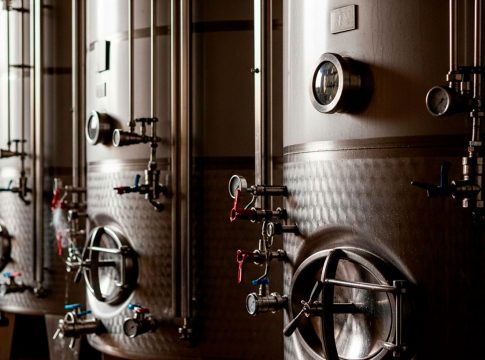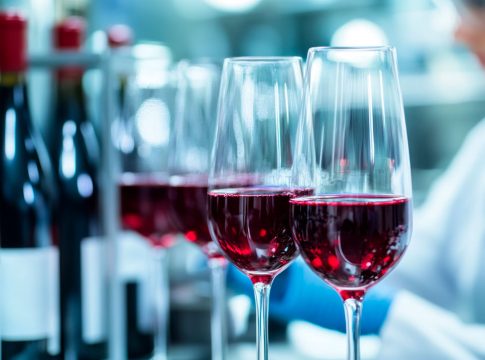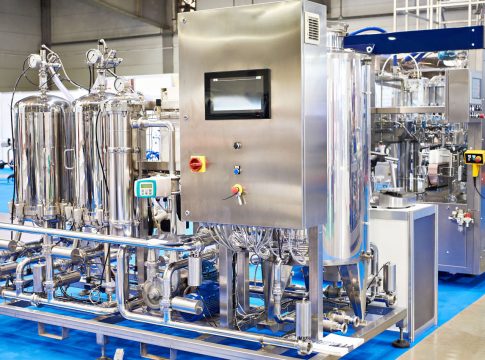
Tra gli indicatori principali per determinare la qualità dei vini spumanti ci sono, assieme alle innumerevoli sfaccettature di gusto e aroma, l'effervescenza e la stabilità della spuma. I vini spumanti di qualità presentano una spuma bianca e compatta, generata dalla presenza di numerose file di bollicine fini che, una volta raggiunta la superficie, formano una corona stabile (Maujean, 1989; Ligier-Belair, 2001). Il meccanismo è condizionato dall'equilibrio tra l’accrescimento delle bollicine e la loro distruzione sulla superficie (Moreno-Arribas et al., 1996). Tuttavia, l'effervescenza e la spuma non sono solo degli indicatori estetici, ma hanno anche un effetto rilevante sulla percezione al palato (Vanrell, 2002). In numerose pubblicazioni scientifiche sono stati enumerati i vantaggi del coinoculo o inoculo sequenziale di lieviti non-Saccharomyces come T. delbrueckii, M. pulcherrima, C. zemplinina, Hanseniaspora spp. e P. kluyveri (Jolly et al., 2014) per migliorare qualità e complessità dei vini, con effetti positivi su profilo aromatico, contenuto in glicerolo, polisaccaridi, mannoproteine e sul livello di acidità volatile (Ciani e Comitini 2011; Loira et al. 2014, Zara et al. 2014). Alcuni ceppi di non-Saccharomyces sono disponibili commercialmente sotto forma di LSA (lievito secco attivo) e recentemente è stato sperimentato l’inoculo sequenziale di Torulaspora delbrueckii e Saccharomyces cerevisiae in prima fermentazione come strumento per migliorare le proprietà della spuma nella produzione dei vini spumanti (Gonzalez-Royo et al. 2015; Medina-Trujillo et al. 2017A).
L'ARTICOLO COMPLETO E' PUBBLICATO A PAGINA 44 DI VVQ 5/2018 (LUGLIO).
Per approfondire
Bibliografia
Ayestarán, B.; Guadalupe, Z. and León, D. (2004) Quantification of major grape polysaccharides (Tempranillo v.) released by maceration enzymes during the fermentation process. Anal. Chim. Acta. 513:29–39.
Benito, S.; Hofmann, T.; Laier, M.; Lochbühler, B.; Schüttler, A.; Ebert, K.; Fritsch, S.; Röcker, J. and Rauhut, D. (2015)
Effect on quality and composition of Riesling wines fermented by sequential inoculation with non-Saccharomyces and Saccharomyces cerevisiae. Eur, Food Res. Technol. 241:707–717.
Boulton, R.B.; Singleton, V.L.; Bisson, L.F. and Kunkee, R.E. (1996) Principles and practices of winemaking. Chapman & Hall, New York.
Brissonnet, F. and Maujean, A. (1993) Characterization of foaming proteins in a Champagne base wine. Am. J. Enol.Vitic. 44:297–301.
Canals, J.M.; Arola, L. and Zamora, F. (1998) Protein fraction analysis of white wine by FPLC. Am. J. Enol. Vitic. 49:383–388.
Ciani, M. and Comitini, F. (2011) Non-Saccharomyces wine yeasts have a promising role in biotechnological approaches to winemaking. Ann. Microbiol. 61:25–32.
Cilindre, C.; Liger-Belair, G.; Villaume, S.; Jeandet, P. and Marchal, R. (2010) Foaming properties of various Champagne wines depending on several parameters: grape variety, aging, protein and CO2 content. Anal. Chim. Acta. 660:164–170.
Coelho, E.; Reis, A.; Domingues, M.R.M.; Rocha, S.M. and Coimbra, M.A. (2011) Synergistic effect of high and low molecular weight molecules in the foamability and foam stability of sparkling wines. J. Agric. Food Chem. 59:3168–3179.
Esteruelas, M.; González-Royo, E.; Kontoudakis, N.; Orte, A.; Cantos, A.; Canals, J.M. and Zamora, F. (2015) Influence of grape maturity on the foaming properties of base wines and sparkling wines (Cava). J. Sci. Food Agric. 95:2071–2080.
González-Royo, E.; Pascual, O.; Kontoudakis, N.; Esteruelas, M.; Esteve-Zarzoso, B.; Mas, A.; Canals, J.M. and Zamora, F. (2015) Oenological consequences of sequential inoculation with non-Saccharomyces yeasts (Torulaspora delbrueckii or Metschnikowia pulcherrima) and Saccharomyces cerevisiae in base wine for sparkling wine production. Eur. Food Res. Technol. 240:999-1012.
Jolly, N.P.; Varela, C. and Pretorius, I.S. (2014) Not your ordinary yeast: non-Saccharomyces yeasts in wine production uncovered. FEMS Yeast Res. 14:215–237.
Kemp, B.; Alexandre, H.; Robillard, B. and Marchal, R. (2015) Effect of production phase on bottle-fermented sparkling wine quality. J. Agric. Food Chem. 63:19−38.
Ligier-Belair, G. (2001) Histoire illustré d’une bulle de Champagne. Bull. de la S.F.P. 127:9-11.
Loira, I.; Vejarano, R.; Bañuelos, M.A.; Morata, A.; Tesfaye, W.; Uthurry, C.; Villa, A.; Cintora, I. and Suárez-Lepe, J.A. (2014) Influence of sequential fermentation with Torulaspora delbrueckii and Saccharomyces cerevisiae on wine quality. LWT - Food Sci. Technol. 59:915-922.
Martínez-Lapuente, L.; Guadalupe, Z.; Ayestarán, B.; Ortega-Heras, M. and Pérez-Magariño, S. (2013) Changes in polysaccharide composition during sparkling wine making and aging. J. Agric, Food Chem. 61(50):12362–12373.
Martínez-Rodríguez, A.; Carrascosa, A.V.; Barcenilla, J.M.; Pozo-Bayón, M.A. and Polo, M.C (2001) Autolytic capacity and foam analysis as additional criteria for the selection of yeast strains for sparkling wine production. Food Microbiol. 18:183–191.
Maujean, A. (1989) Histoire de bulles. Rev Fran. Oenol. 120:11-17.
Maujean, A.; Poinsaut, P.; Dantan, H.; Brissonet, F. and Cossiez, E. (1990) Etude de latenue et de la qualité de mousse des vins effervescents II. Bulletin de l’OIV 711–712:405–426.
Medina-Trujillo, L.; González-Royo, E.; Sieczkowski, N.; Heras, J.; Canals, J.M. and Zamora, F. (2017a). Effect of sequential inoculation (Torulaspora delbrueckii/Saccharomyces cerevisiae) in the first fermentation on the foaming properties of sparkling wine. Eur. Food Res. Technol. 243:681-688.
Medina-Trujillo, L.; González-Royo, E.; Sieczkowski, N.; Heras, J.M.; Canals, J.M. and Zamora, F. (2017b) Levaduras secas inactivadas en el tiraje de vinos espumosos. La semana vitivinícola 3494:582-590.
Moreno-Arribas, M.V.; Pueyo, E. and Polo, M.C. (1996) Cuantificación del CO2 y evaluación de la calidad de la espuma en vinos espumosos. Alimentación – Equipos y tecnología 2:123-127.
Moreno-Arribas, V.; Pueyo, E.; Nieto, F.J.; Martin-Alvarez, P.J. and Polo, M.C. (2000) Influence of the polysaccharides and nitrogen compounds on foaming properties of sparkling wines. Food Chem. 70:309-317.
OIV - Organisation Internationale de la Vigne et du Vin (2014) Methods of analysis of wines and must. http://www.oiv.int/oiv/info/enmethodesinternationalesvin.
Pérez-Magariño, S.; Martínez-Lapuente, L.; Bueno-Herrera, M.; Ortega- Heras, M.; Guadalupe, Z. and Ayestarán, B. (2015) Use of commercial dry yeast products rich in mannoproteins for white and rose sparkling wine elaboration. J. Agric. Food Chem. 63:5670−5681.
Poinsaut, P. (1991) Le Mosalux, appareil de mesure du pouvoir moussant d’un vin. Revue des Oenologues 59:35-43.
Pocock, K.F.; Salazar, F.N. and Waters, E.J (2011) The effect of bentonite fining at different stages of white winemaking on protein stability. Aust. J. Grape Wine Res. 17:280-284.
Pueyo, E.; Martín-Alvarez, P.J. and Polo, M.C. (1995) Relationship between foam characteristics and chemical composition in wines and cavas (sparkling wines). Am. J. Enol. Vitic. 46:518–524.
Vanrell, G. (2002) Estudi de l’evolució del comportament escumant i de la Fracció coloidal del Cava durant la seva elaboració; Efecte de diferents tractaments. Tesis Doctoral, Facultad de Enología de Tarragona. Universidad Rovira i Virgili.
Vanrell, G.; Esteruelas, M.; Canals, J.M. and Zamora, F. (2005) Influence du type de clarification du vin de base et des adjuvants de tirage sur la qualité de la mousse des vins effervescents. Revue des Oenologues, 114:28–30.
Vanrell, G.; Canals, R.; Esteruelas, M.; Fort, F.; Canals, J.M. and Zamora, F. (2007) Influence of the use of bentonite as a riddling agent on foam quality and protein fraction of sparkling wines (Cava). Food Chem. 104:148-155.
Zamora, F. (2003) La espuma del Cava; un delicado equilibrio. Enólogos 23:28-32.
Zara, G.; Mannazzu, I.; Del Caro, A.; Budroni, M.; Pinna, M.B.; Murru, M.; Farris, G.A. and Zara, S. (2014) Wine quality improvement through the combined utilisation of yeast hulls and Candida zemplinina/Saccharomyces cerevisiae mixed starter cultures. Aust. J. Grape Wine Res. 20:199–207.











